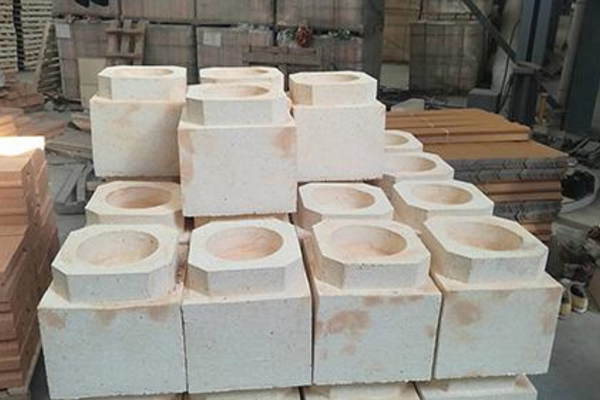
The different compositions of refractory bricks can be divided into five categories, namely: silicon-aluminum alloy alkaline series refractory bricks, batu bata tahan api, batu bata karbon, zirconium refractory bricks, and heat insulation bricks.
The different compositions of refractory bricks can be divided into five categories, namely: silicon-aluminum alloy alkaline series refractory bricks, batu bata tahan api, batu bata karbon, zirconium refractory bricks, and heat insulation bricks. Alumina refractory bricks are the first. Silicon bricks are the first acid-resistant refractory bricks.
For coke oven construction first, but for various glass, keramik, carbon furnace, refractory brick vaults and other bearing parts of the bearing furnace, hot air furnace temperature high parts of the use, but should not be less than 600 ℃ and temperature fluctuations of heat equipment.
Batu bata tanah liat, it is a blast furnace, hot blast furnace, heating furnace, boiler, lime kiln, rotary kiln ceramic refractory bricks.
Batu bata tahan api alumina tinggi, high alumina refractory materials are composed of corundum, mullite, dan fase kaca. The raw materials are natural ores of bauxite and silicate, as well as fused alumina, sintered alumina, mullite composition, and clinker of alumina and clay calcination. It is produced by sintering. Namun, the commodity is also available as fused bricks, molten bricks, batu bata, and amorphous bricks. Batu bata tahan api alumina tinggi banyak digunakan dalam industri baja, industri logam non-ferrous, dan industri lainnya.
Corundum refractory brick, which is a kind of refractory brick with corundum as the first object, can be divided into sintered corundum brick, and electrofused corundum brick.
With the continuous development of the cement industry, the requirements for refractory materials have also been put forward higher. Refractory bricks are popular because of their high-temperature resistance. Jadi, how do friends know the quality of refractory bricks?
The refractory brick quality inspection method is usually hammer smash brick base, listening to their sound is determined, when a dull sound “, also confirmed the refractory material internal open space or level, this brick is not suitable for processing. When the sound is balanced. Confirmation of the internal structure of the brick is better. Suitable for processing; when the sound is very clear, close to the metallic sound. It is proven that the internal sintering of refractory bricks is high and the process is difficult. It has a high density, good detail, kekuatan tinggi, and high thermal conductivity per unit volume component.
Refractory bricks have the following characteristics: komposisi kimia: the main components to determine the quality and performance of refractory materials; kekuatan tekan: the ability to accept the maximum pressure (room temperature); ketahanan guncangan termal: the ability to resist temperature changes without being destroyed. Flexural strength: the ability to accept shear pressure. Load softening temperature: also known as high-temperature load deformation temperature threshold, this parameter is very important to symbolize the high-temperature resistance of the material.
1. Thermal insulation performance
Refractory brick thermal conductivity is 1.0 (average temperature 350 ± 25 ℃) w / m.k above, while the thermal conductivity of insulation brick is generally in 0.2-0.4 (average temperature 350 ± 25 ℃) w / m.k. This can be concluded that the insulation performance of the insulation brick than refractory brick insulation performance is much better.
2. Refraktori
The refractories of refractory bricks are above 1400 degrees, while the refractories of insulation bricks is mainly below 1400 degrees.
3. Density
The density of refractory bricks is basically above 2.0g/cm³, while insulation bricks are mostly light insulation materials, and density is generally 0.8-1.0g/cm³.
Comprehensive, refractory bricks have high mechanical strength, long service life, good chemical stability, no chemical reaction with the material, and good high-temperature resistance, the highest heat-resistant temperature can reach 1800 ℃. It is especially suitable for use in high and low-temperature conversion furnaces, conversion furnaces, hydrogenation converters, desulfurization tanks, and methanation furnaces in fertilizer plants, and also in hot air furnaces and heating conversion equipment in the steel industry.
Refractory brick has the advantages of high density, kekuatan tinggi, ketahanan aus, good corrosion resistance, small coefficient of thermal expansion, high grinding efficiency, low noise, long service life, and non-staining materials. It is a high-quality grinding medium adapted to various grinding machines.
Insulation brick has heat preservation and insulation: effectively reducing energy consumption. Fireproof: reach the national standard A grade. Clean, environmental protection: will not cause secondary pollution of the air. Light weight: each square meter only weighs about 1.4 kg, reducing the load of the building. Simple production: completely break through the traditional process, and greatly shorten the construction cycle. Aesthetic: adjustable to various colors, suitable for open installation. Durable: long service life. 7 major advantages.
Refractory brick and insulation brick are very different, their use environment, scope, and role are different. Different locations will use different materials, in the purchase of materials, we have to decide which refractory material is suitable for their use according to their actual situation.
Sejak Oktober, harga alumina terus meningkat, and China's largest bauxite importer - a…
Pertama, Bata Alumina Tinggi: The Leader In High Temperature Refractories As a leader in high-temperature…
The application of refractory bricks in the kiln immediately endangers the operation rate of the…
Analysis Of The Causes Of Common Quality Problems In Tunnel Kiln Construction And Measures To…
Corundum quality refractory castables are made from corundum to the new jade refractory insulation material…
Analisa Bahan Baku Tahan Api Aluminium-Silikon Prof. Li Yong of the University of Science and…